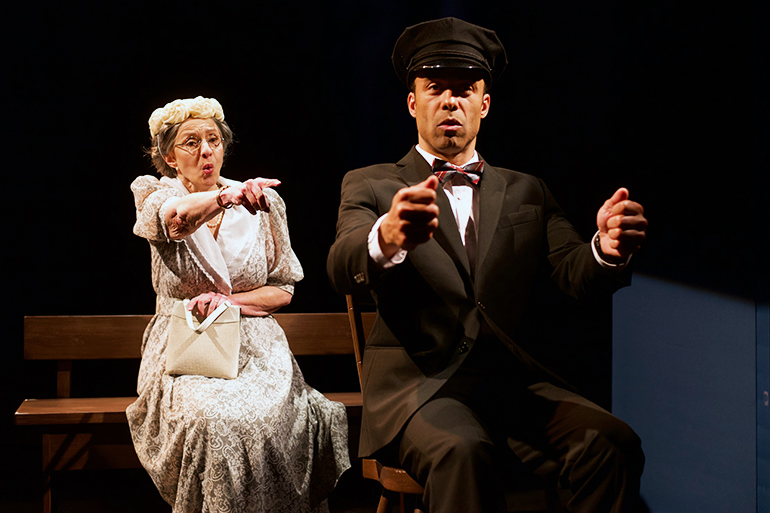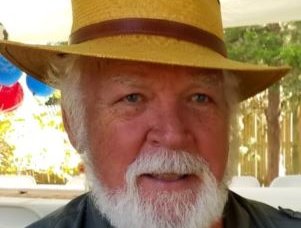Theatre Three Drives into Its 50th Year with 'Miss Daisy' at the Wheel

Theatre Three in Port Jefferson is currently celebrating its 50th anniversary. That’s a major accomplishment in this ever-changing Long Island theatrical landscape where local theaters pop up, fight to survive and oftentimes lose the battle. Theatre Three has a well-deserved reputation for producing finely crafted theater that bravely explores serious subject matter. Such is the case with its current stellar production of Driving Miss Daisy, which elicited a standing ovation from an enthusiastic audience.
We would like to think the world has become enlightened since the prejudices pervasive in the mid-20th century, the timeframe of Driving Miss Daisy. We would also like to think that diversity is the norm today, and that Ellen DeGeneres’ mantra “Be kind to one another” is the way of the world in 2020. Though we have become somewhat enlightened, we have not been able to eliminate hate crimes that still plague society, indicating that as much as things have changed, things are unfortunately still too much the same.
Driving Miss Daisy first appeared off-Broadway at Playwrights Horizons from 1987–1990, before the award winning film starring Jessica Tandy and Morgan Freeman was released in 1989. It is the only film based on an off-Broadway production ever to win an Academy Award for Best Picture. One year earlier, in 1988, the play won the Pulitzer Prize for Drama.

Alfred Uhry’s play is based on his Jewish grandmother, who lived in Atlanta in the middle of the last century, and the African American chauffeur who Uhry’s father hired to drive her after she was in a car accident.
The play opens with the sound of a crash. Miss Daisy drove through a neighbor’s garden and shed. Her worried son, Boolie Werthan, takes her car keys away.
Enter 60-year-old Hoke Colburn, hired by Boolie as her driver. At first, the prideful Miss Daisy refuses the driver, instead opting for the bus. Her refusal lasts for six days, prompting Hoke’s remark, “It only took her six days, the same as it took the lord to make the world.” Though she gives in to being driven, Miss Daisy resorts to complaining about the routes her driver takes. Soon she gets used to Hoke’s presence, thus beginning the 25-year relationship from 1948 through 1973. Their connect not only through driving but in the shared prejudice both face in the Deep South at that time, including the bombing of her synagogue. This triggers Hoke to share how he witnessed the lynching of his friend’s father.
By the final scene, the magnitude of their bond is profound. Miss Daisy is in a nursing home suffering from dementia when she’s visited by Hoke. Her trembling hands reach out for his and she confides, “You’re my best friend.”

This play sends a strong message about how people from different backgrounds come together and not only find similarities but become life support for one another.
Director Linda May has assembled a perfect three-person ensemble who work flawlessly together.
Phyllis March becomes Daisy Werthan, bringing this dynamic character to life physically and emotionally. She gracefully maneuvers along the play’s 25-year span, starting at 72 years old and moving into old age at 97. March sets out as a feisty whirlwind who in the end must contend with a mind and body that has all but abandoned her.
Antoine Jones as Hoke Colburn gives a simmering and subtle performance. Hoke is a proud man who has seen the horrors of prejudice and learned diplomacy in order to survive. We feel that survival instinct in Jones’ portrayal. It is interesting to note that Jones’ father played Hoke Colburn at Theatre Three 25 years ago.
Rounding out the cast is Steve Ayle in the role of Miss Daisy’s doting son, Boolie Werthan. Ayle goes through a subtle aging process from age 40 to 65. He remains appropriately low-key as he is dedicated to caring for his strong-willed mother.
All three actors maneuver Atlanta, Georgia-based Southern accents believably.
Scenes meld seamlessly from one into the next thanks to Randall Parsons’ set designs, and Robert W. Henderson, Jr.’s sound design weaves period music between scenes, from a seductive jazz saxophone to the lyrical strands of Frank Sinatra to classical segments.
A Personal Anecdote
There are several characters that only receive slight reference in the play who were actual characters in the 1989 movie. One such character is Miss McClatchey, Boolie’s secretary.
My dear friend and actress Jo Ann Havrilla played that role in the iconic movie. Joann is a comic with a sense of timing to match Carol Burnett. One morning as she was in the makeup trailer chatting away with the makeup crew, Jessica Tandy came in. As they talked, Joann unconsciously adjusted her physical being. When Jessica left, Jo Ann had to laugh at herself realizing that instead of sprawling on the makeup chair, she was now sitting with knees together, hands folded on her lap, feet planted on the floor and back ramrod straight.
“THAT,” she mused, “is the effect of being near a lady of greatness.”
See Driving Miss Daisy at Theatre Three in Port Jefferson through February 1, 2020. Visit theatrethree.com for schedule, tickets and info.
Barbara Anne Kirshner is the author of Madison Weatherbee-The Different Dachshund, a children’s book and musical. She is a regular contributor to DansPapers.com.



